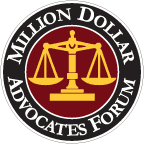Deciphering Liability: Understanding Responsibility in Various Contexts
Determining liability is a fundamental aspect of legal and ethical considerations in various situations, from car accidents to business disputes. This article delves into the multifaceted concept of liability, exploring its significance, legal implications, and practical applications in different contexts.
Understanding Liability
Liability, in its essence, refers to the state of being responsible for something, often in a legal or financial sense. It involves assessing who is at fault or accountable for a particular event or outcome. While liability can be straightforward in some cases, it can become quite intricate when multiple parties are involved, or when various laws and regulations come into play.
Types of Liability
Liability can manifest in several forms, depending on the context in which it arises. Here are some common types:
1. Legal Liability
Legal liability pertains to responsibility as defined by the law. It encompasses both civil and criminal liabilities. Civil liability typically involves disputes between individuals or entities, such as personal injury lawsuits or contract disputes. Criminal liability, on the other hand, pertains to violations of criminal laws and can lead to penalties such as fines, probation, or incarceration.
2. Financial Liability
Financial liability relates to the responsibility for financial obligations. This may include debts, loans, and financial commitments. In business, financial liability is a critical consideration, particularly when assessing a company’s financial health and solvency.
3. Product Liability
Product liability centers on the responsibility of manufacturers, distributors, and sellers for the safety and quality of their products. When a product causes harm or injury to a consumer, those involved in its production and distribution may be held liable.
4. Professional Liability
Professional liability, often referred to as malpractice, applies to individuals or entities providing specialized services, such as doctors, lawyers, or architects. When a professional’s actions or negligence result in harm or financial loss to a client, they may face professional liability claims.
5. Employer Liability
Employer liability encompasses an employer’s responsibility for the actions of their employees during the course of their employment. It is especially relevant in cases of workplace accidents or misconduct by employees.
Determining Liability in Different Contexts
1. Personal Injury Cases
Determining liability in personal injury cases involves assessing who is at fault for an accident or injury. This often requires collecting evidence, interviewing witnesses, and evaluating the applicable laws. Factors such as negligence, intentional wrongdoing, or strict liability may come into play.
2. Business Disputes
In the business world, disputes can arise from various issues, including contract breaches, intellectual property violations, or partnership conflicts. Resolving these disputes often involves identifying the responsible party and determining the appropriate legal remedies.
3. Product Liability Claims
Product liability cases demand a thorough examination of the product’s design, manufacturing process, and warnings or instructions provided to users. Manufacturers may be held liable if defects in their products cause harm.
4. Medical Malpractice
Medical malpractice cases require an evaluation of healthcare professionals’ actions to determine if they deviated from the standard of care. Establishing liability in these cases can be complex due to the technical nature of medical procedures.
5. Workplace Accidents
When workplace accidents occur, determining liability involves investigating the circumstances, safety measures in place, and whether any parties failed in their duty to protect employees. This may involve workers’ compensation claims or lawsuits against third parties.
Challenges in Determining Liability
Determining liability is not always straightforward, and several challenges may arise during the process:
1. Evidence Collection
Collecting relevant evidence, such as documents, eyewitness accounts, or expert opinions, can be challenging. In some cases, crucial evidence may be lost or tampered with.
2. Complex Legal Framework
Navigating the legal framework, which varies by jurisdiction and context, can be daunting. Understanding the nuances of laws and regulations is crucial to determining liability accurately.
3. Multiple Parties
In cases involving multiple parties, identifying each party’s degree of liability can be intricate. Comparative negligence principles may come into play, where responsibility is apportioned among multiple parties based on their contributions to the incident.
4. Insurance Coverage
Insurance policies often play a significant role in liability cases. Understanding the extent of insurance coverage and how it impacts liability is essential.
Resolving Liability Disputes
Resolving liability disputes typically involves negotiation, mediation, or litigation. The choice of resolution method depends on the complexity of the case and the willingness of parties to cooperate.
1. Negotiation
Negotiation involves parties discussing the matter and reaching a mutually acceptable agreement. It can be an efficient way to resolve disputes, especially when both parties are willing to compromise.
2. Mediation
Mediation involves a neutral third party, the mediator, who facilitates discussions between parties to reach a settlement. Mediation is often less adversarial than litigation and can preserve relationships.
3. Litigation
When negotiations or mediation fail, the case may proceed to litigation. Litigation involves presenting the case in court, where a judge or jury will determine liability and award damages if necessary. Litigation can be time-consuming and costly but may be necessary for complex disputes.
Conclusion
Determining liability is a multifaceted process with far-reaching implications in various contexts, from personal injury cases to business disputes. It requires a deep understanding of the relevant laws, careful assessment of evidence, and often involves multiple parties. Navigating the complexities of liability requires a commitment to fairness and justice, whether in a courtroom or at the negotiation table. By comprehending the concept of liability and its diverse applications, individuals and businesses can make informed decisions and contribute to a just and equitable society.









